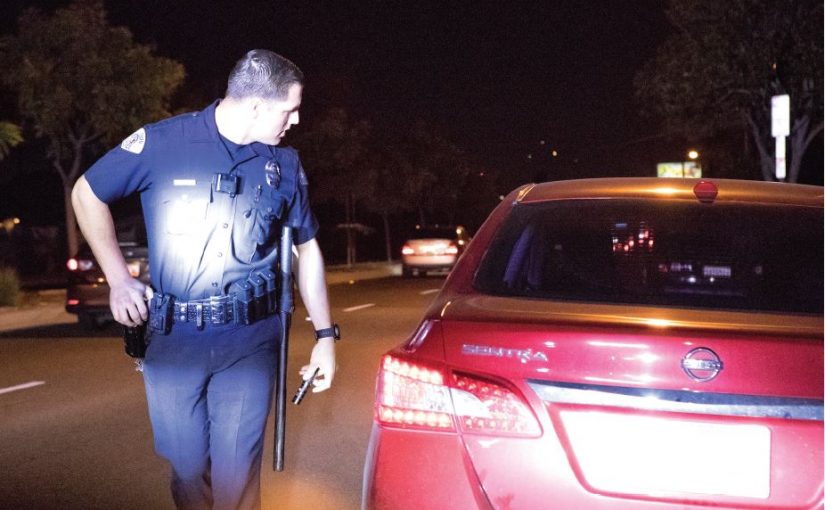Imagine if an agency was able to actually ensure that its officers were safely responding to calls for service, communicating with the public in a courteous manner, and enforcing the law without violating the rights of the citizens they are sworn to protect. The thought of providing this type of oversight and close supervision seems nearly impossible—there are far too many officers and far too few supervisors who already have a myriad of tasks. However, while this might first appear as an exercise in wish fulfillment, the solution lies in a tool that most agencies are already utilizing: the body-worn camera (BWC).
As more and more law enforcement agencies purchase BWCs in response to the public’s demand for transparency in police operations, most of law enforcement executive-level focus on BWCs has been geared toward the overall cost of the BWC program, policy, data storage, and public privacy. However, while the aforementioned concerns should not be overlooked, what seems to be missed by many agencies deploying these devices is the benefit of BWCs as mechanisms for risk management and performance measurement tools.
Risk management is the process used to identify and control exposure to potential risks and liabilities in both public and private organizations. A wide variety of corporate organizations adopt risk management practices to avoid increasing threats of litigation, reduce the risk of physical harm to their clients and themselves, and provide a higher quality of service.1 While law enforcement agencies have long utilized business models from the corporate realm for baseline best practices, the area of risk management has been underutilized by the profession. Agencies that have purchased BWCs have purchased not only tools that will aid in the reduction of demeanor complaints and increase organizational transparency, but also devices that can be utilized as auditing tools to improve officer performance. The following five steps can help agencies use BWC video as an integral piece of a holistic risk management program.
Step 1. Know Your “Why”
The first step in developing a BWC risk management program is to clearly identify exactly what problem needs to be solved and, more importantly, why these issues require attention. Ask the question, “Where is the agency bleeding?” If an agency has experienced negative media attention or civil litigation as a result of poor officer performance, this model will help leaders discover which incidents create the greatest opportunity for the negative results they are trying to mitigate. Vehicular pursuits, arrests involving the use of force, and confrontations with combative subjects during mental health–related calls are the most prominent areas where law enforcement agencies have experienced loss. The agency’s first step toward employing BWCs for risk management involves identifying the incident types that have been most problematic for the agency. Review the agency’s loss data to determine what types of incidents historically have had the greatest negative affect on officer safety and civil liability. Once this high-risk critical incident list is generated, agency leaders should require selected supervisory personnel to conduct a mandatory review of all incidents that fall under these categories.
Step 2. Deconstruction and Key Performance Indicators
The next step in developing a holistic risk management program using BWC video as core content involves deconstruction. Deconstruction is the process of separating a complex system into the smallest subsystems possible to better understand the larger system.2 Once the subsystems are identified, they can be isolated to see how they work and what parts they play in achieving the desired outcome. Step 2 involves taking the incident types that were identified in Step 1 and breaking each of them down into the steps that are required to successfully complete that task. These steps are known as key performance indicators (KPIs). KPIs become the checklist or the critical path that will be used to measure acceptable performance. The following is an example of an incident type with an abbreviated list of its KPIs:
Incident Type: Domestic Violence
Key Performance Indicators
Upon arrival at the residence, did the officer perform the following tasks:
□ Check on the welfare of the victim
□ Determine if the suspect was still on scene
□ Determine what criminal offense, if any had occurred
□ Determine if any weapons were involved
The role of the supervisor or reviewer who is viewing the BWC video is to determine whether or not the officer has performed the KPIs and whether they were performed properly. Establishing KPIs and sharing them with the officers provides the officers with an unambiguous identification of what success should look like. Once officers have been made aware of what is expected of them, they are more likely to perform to the clearly established standard. Establishing KPIs also helps to minimize “rater bias” or the tendency for the rater to have an inaccurate distortion of measurement based on factors outside of the measurement criteria.
Step 3: Take Action
The ability to view an officer’s actions and determine which key steps were omitted, whether the actions resulted in an unfavorable outcome or not, is critical in developing a response that goes beyond the traditional “name, blame, shame, and retrain” method of problem mitigation. If the officer’s actions do not meet agency expectations, the next step will be to determine what level of mitigation is most appropriate. The ultimate goal of the supervisory review is to institute corrective measures that will bring the officer’s actions in line with expected norms and increase the likelihood of improved future outcomes.
The most significant aspect of the BWC risk management process lies in the follow-up actions taken by the reviewer. If errors are observed, the onus now lies with the reviewer to take a decisive action. The actions taken need not be punitive; consider the following list of actions as a guide for the program:
1. Commend—The performance observed exceeded expectations and is worthy of consideration for a commendation.
2. No Action—The performance observed was consistent with agency best practices.
3. Counseling—The performance is inconsistent with agency best practices resulting in the need for a counseling session.
4. Training—The performance falls short of expectations, and the subject officer requires training in the key performance indicator that has been identified.
5. Internal Affairs—The performance observed violates an existing rule, regulation, policy, procedure, order or directive, ordinance, statute, or guideline and should be reviewed by the Internal Affairs Unit.
Step 4: Recording the Data
Collecting and storing the data for a BWC risk management program should not be laborious or necessitate a degree in coding. A Microsoft Excel spreadsheet can capture all of the data needed to build a robust program that tracks not only officer inconsistencies, but also measures taken by the supervisors to correct identified errors. Microsoft Access is another excellent database program that can be used to store the data gathered in a searchable and easily accessible format. With a minor investment in time, agencies will be able to keep track of their performance-related data. The following items should be included in the database:
- Incident/Case #: agency’s identifying incident number
- Date of Review: the actual date the incident is being reviewed
- Date of Incident: the date the incident occurred
- Officer Involved: the individual officer whose action is being reviewed
- Supervisor Conducting Review: the supervisory officer conducting the incident review
- Media Type: which type of digital media is being reviewed (MVR, BWC, or other)
- Incident Type: the specific type of incident the officer is responding to
- Performance Indicator: specific KPIs relative to the incident type
- Incident Location: where the incident occurred
- Start Time: the specific time the officer activated his or her BWC
- End Time: the specific time the officer deactivated his or her BWC
- Disposition: the result of the encounter (Arrest, Warning, Release at scene, Turned Over to Another Authority, Escape, Transported to Hospital, etc.)
- Follow-Up Action Taken: the action taken by the supervisor as a result of viewing the BWC video (Commendation, No Action, Counseling, Training, Refer to Internal Affairs)
Step 5: Review
Once data collection on officer performance has begun, a review of all the data in the system should be conducted every 30 days in order to determine which areas of concern appear most frequently. This information should be shared with the agency’s training unit to guide training efforts, such as roll-call trainings. The data can also be used as a financial planning tool for resources related to future trainings. In addition to reviewing agency policies, agencies should also review existing training methods to determine if the errors being represented in the officers’ actions reflect a gap in receptivity, which may have something to do with the training methods being employed.
Once data have been collected for at least 30 days, agencies will be able to search the records to determine exactly which errors in officer performance (unmet KPIs) appear most frequently, which individual officers exhibit performance-related issues in the high-risk incident types, and which areas require greater attention from the training unit.
Review, Record, Report
The benefits that a visual, video-based risk management system can have on officer performance and officer safety are immeasurable. Here is a recap of the process:
1. Know Your “Why”: Determine which areas expose the agency to the greatest risk of loss. Identify the incident types that correspond to those high-risk critical incidents and require a mandatory video review of those incidents.
2. Deconstruction and Key Performance Indicators: Determine a set of KPIs (or the critical path needed for successful completion of the identified task) for each incident type.
3. Take Action to institute corrective measures or to reinforce appropriate or commendable actions.
4. Record the Data on a spreadsheet or within a database.
5. Review the results (at least monthly) of the data to determine the agency’s training needs.
Utilizing the BWC program as a risk-reducing, performance management tool allows agencies to identify those issues that have historically resulted in losses. Identifying the errors and taking proactive steps to improve officer performance will pay huge dividends for any agency. Consider this process a form of quality control on the service the agency provides to the public. ♦
Notes:
1 Kwok-Sze Richard Wong and Kathleen M. Rakestraw, The A, B, Cs of Risk Management (Washington, DC: International City/County Management Association, 1991).
2 Josh Kaufman, The Personal MBA: Master the Art of Business (New York, NY: Penguin Group, Inc., 2012).
Please cite as
Jonathan Parham, “Body-Worn Cameras: The Most Underutilized Risk Management Tool,” The Police Chief (December 2017).



